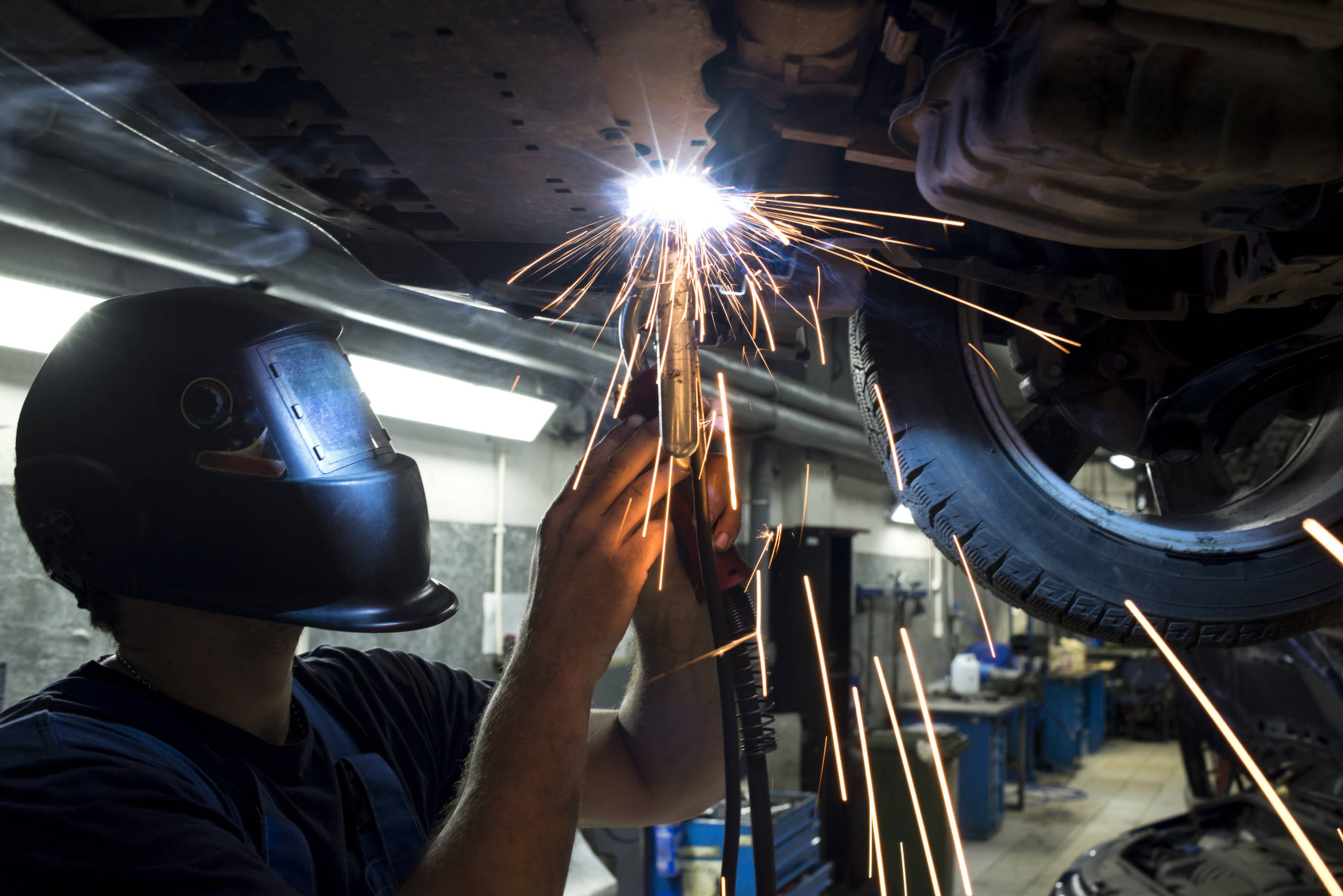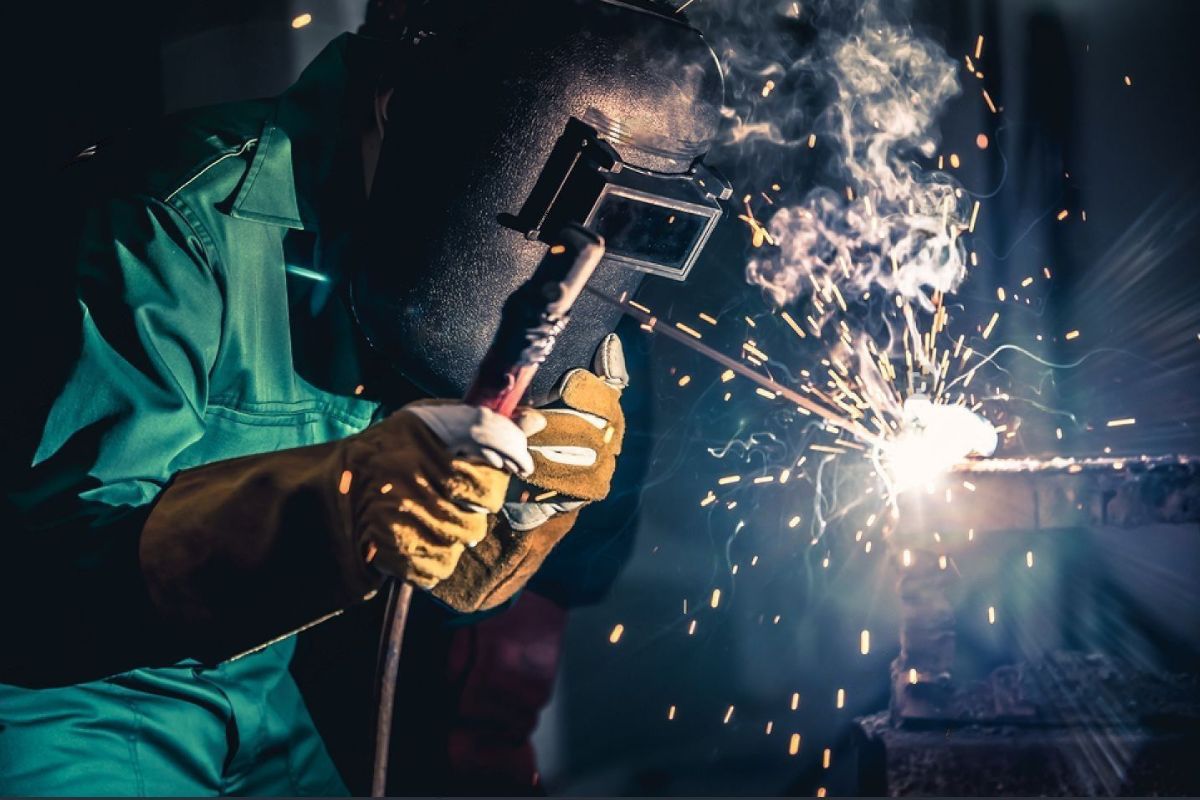Usual Welding Fixing Issues and Just How to Address Them Effectively
Welding repair work usually encounter an array of issues that can endanger the stability of the last item. Typical problems include inadequate infiltration, porosity, and misalignment, to name a few. Each issue offers unique obstacles that call for certain approaches for resolution. Understanding these issues is vital for welders intending to improve their results and skills. This discussion will check out these usual welding fixing concerns and reliable techniques to address them.
Insufficient Penetration
Insufficient penetration occurs when the weld steel falls short to totally fuse with the base material, leading to weak joints and potential architectural failings. This concern frequently originates from not enough warmth input, incorrect electrode angle, or improper welding rate. Welders may experience inadequate penetration as a result of a mistake of the required criteria for a certain material thickness or type. In addition, contamination on the base material's surface can prevent efficient bonding, worsening the issue. To attend to inadequate infiltration, welders need to ensure suitable settings on their devices and preserve a clean work surface. Normal inspection of welds is suggested to recognize any kind of shortages early, permitting for timely corrections and the avoidance of jeopardized architectural integrity in bonded assemblies.
Porosity
Porosity is a typical issue in welded joints that materializes as tiny gas bubbles entraped within the weld steel. This flaw can compromise the stability of the weld, resulting in decreased toughness and prospective failing under anxiety. Montana Mobile Welding and Repair Welding. Porosity normally develops from contamination, wetness, or improper welding methods, which enable gases to run away right into the molten weld pool. To deal with porosity, welders should assure proper surface area preparation, keep a tidy workplace, and make use of appropriate welding criteria. In addition, choosing the right filler product and protecting gas can alleviate gas entrapment. Routine evaluation and screening of welds can aid recognize porosity early, ensuring prompt restorative actions are taken, consequently maintaining the top quality and dependability of the welded framework
Misalignment
Imbalance in welding can emerge from different factors, consisting of incorrect setup and thermal development. Recognizing the origin is vital for reliable resolution. Several modification strategies are available to straighten elements and guarantee structural stability.
Sources of Misalignment
Welding misalignment typically stems from a selection of underlying issues that can endanger architectural stability. One key cause is inappropriate fit-up of components before welding, which can bring about spaces and irregular surfaces. Variations in thermal expansion during the welding procedure can also lead to distortion, especially if the products being signed up with have different coefficients of growth. Furthermore, poor securing and fixturing might stop working to hold parts firmly in area, resulting in activity during welding. Badly maintained tools, consisting of welding equipments and tools, might present variances in the weld bead, additional adding to misalignment. Lastly, driver error, stemming from not enough training or experience, can likewise play a substantial role in producing misaligned welds.
Improvement Techniques Readily Available
Attending to misalignment efficiently calls for a mix of rehabilitative techniques customized to the certain concerns at hand. One usual technique is the use of jigs or fixtures to hold components in the proper placement during welding, ensuring consistent alignment. Additionally, preheating the materials can help in reducing distortion and improve fit-up. For substantial misalignment, mechanical adjustment methods, such as making use of hydraulic jacks or clamps, can be utilized to fix the setting before welding. Post-weld warm therapy might also be necessary to alleviate stresses brought on by imbalance. Mindful inspection and modification during the arrangement stage can avoid misalignment problems from becoming considerable troubles, promoting a smoother welding process and improving total architectural honesty.
Distortion
Distortion is an usual obstacle in welding that can arise from different factors, including uneven cooling and heating. Understanding the sources of distortion is necessary for carrying out efficient prevention strategies. Resolving this concern not only enhances structural honesty but also improves the overall high quality of the weld.
Reasons of Distortion
When based on the intense warm of welding, materials usually undergo adjustments that can bring about distortion. This sensation primarily develops from thermal expansion and contraction during the welding process. As the weld location warms up, the material expands; upon cooling, it contracts, which can create inner anxieties. Additionally, unequal heating throughout a work surface can exacerbate these stress and anxieties, causing warping or bending. The kind of product additionally plays a substantial role; steels with varying thermal conductivity and coefficients of growth might respond in a different way, leading to unforeseeable distortions. Additionally, bad joint design and insufficient fixturing can add to misalignment during welding, enhancing the likelihood of distortion. Recognizing these causes is important for reliable welding repair service click now and prevention approaches.
Prevention Techniques
Effective avoidance methods for distortion during welding concentrate on regulating warm input and ensuring correct joint design. Preserving a regular warmth input helps to reduce thermal growth and tightening, which can lead to distortion. Making use of techniques such as pre-heating the workpiece can additionally lower the temperature gradient, promoting consistent home heating. In addition, choosing appropriate joint layouts, such as T-joints or lap joints, can improve security and reduce tension focus. Executing correct fixturing to protect the work surfaces in position even more help in keeping positioning throughout the welding process. Ultimately, staggered welding series can disperse warm a lot more uniformly, stopping localized distortion. By using these techniques, welders can considerably decrease the possibility of distortion and enhance the general quality of their welds.
Splitting
Splitting is a common concern run into in welding repair work, commonly arising from various factors such as inappropriate cooling prices, product choice, or poor joint preparation. The event of cracks can greatly jeopardize the integrity of the weld, causing possible failures during operation. To resolve this issue, welders need to initially analyze the root triggers, guaranteeing that materials are compatible and properly picked for read here the specific application. In addition, managing the air conditioning price throughout the welding process is necessary; fast cooling can cause anxiety and result in cracking. Correct joint style and preparation likewise add to lessening the risk. Implementing these methods can enhance weld high quality and sturdiness, inevitably lowering the likelihood of fracturing in completed weldments.

Incomplete Combination
A significant concern in welding repair work is incomplete blend, which occurs when the weld metal does not appropriately bond with the base product or previous weld passes - Belgrade Fabrication. This flaw can result in weak points in the joint, possibly jeopardizing the stability of the welded framework. Elements adding to insufficient fusion consist of insufficient heat input, improper welding strategy, and contamination of the surfaces being joined. To address this concern successfully, welders ought to ensure correct pre-weld cleaning and surface prep work, in addition to readjust their welding criteria to attain appropriate penetration and fusion. Regular inspection during the welding process can also aid determine incomplete combination early, permitting timely corrective procedures to boost the overall quality of the weld
Overheating
While welding fixings can improve architectural stability, overheating provides a significant difficulty that can bring about product destruction. Excessive warmth throughout welding can change the mechanical residential or commercial properties of steels, leading to lowered stamina, boosted brittleness, and bending. This sensation is specifically critical in high-stress applications where structural dependability is paramount. Determining getting too hot can involve visual assessments for discoloration or distortion, in addition to checking temperature during the welding process. To mitigate the dangers connected with getting too hot, welders ought to employ appropriate techniques, such as managing heat input, changing traveling rate, and utilizing ideal filler materials. In addition, executing pre- and post-weld heat therapies can aid restore product properties and boost the overall quality of the repair service, ensuring lasting efficiency and security.
Regularly Asked Inquiries
What Are the Common Indicators of a Welding Issue?

Exactly How Can I Check My Welds for Top quality?
To examine welds for top quality, one can utilize aesthetic Extra resources inspections, ultrasonic screening, and radiographic techniques. Each method assures structural honesty, identifies flaws, and confirms adherence to specified criteria, inevitably enhancing the integrity of the bonded joints.
What Safety and security Safety Measures Should I Take While Welding?
When welding, one should prioritize security by putting on ideal individual protective tools, ensuring appropriate ventilation, securing combustible materials away, maintaining a clean work space, and understanding environments to avoid injuries and accidents.
Can I Fix a Weld Without Redoing the Entire Joint?
Fixing a weld without redesigning the whole joint is possible, relying on the damage (Fabrication). Strategies such as grinding, including filler material, or utilizing a welding procedure can effectively address particular imperfections while protecting the surrounding framework
What Equipment Are Necessary for Efficient Welding Repairs?
Crucial devices for reliable welding repair work include a welding machine, cable brush, mill, protective gear, clamps, and filler materials. Each device plays an essential function in guaranteeing high quality and safety and security during the repair procedure. Porosity normally occurs from contamination, dampness, or improper welding strategies, which allow gases to leave right into the molten weld pool. Improperly kept devices, including welding equipments and devices, might present disparities in the weld bead, additional contributing to imbalance. When subjected to the extreme heat of welding, products commonly go through adjustments that can lead to distortion. Splitting is an usual issue come across in welding repairs, usually resulting from various factors such as inappropriate air conditioning prices, material choice, or inadequate joint prep work. A considerable problem in welding repair services is insufficient blend, which happens when the weld metal does not properly bond with the base product or previous weld passes.
Comments on “Field guide for weld distortion by Belgrade Fabrication”